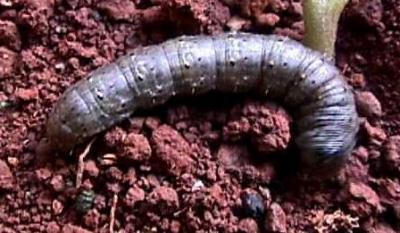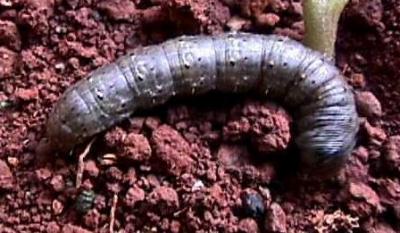Featured Photo

Other Photos

notes
3.1.08 sr: notes ana: match the host plants list with the respective datasheets; although cutworms have many host plants, they are no major pests of all of them, therefore they have not been included in all datasheets of the above mentioned crops; s. by monitoring and decision making: pheromone traps are not available locally. economic threshold for which crop? where? under which conditions?;
featured_photo_title
Cutworm
feaured_photo_co
A.M. Varela, icipe
Is this a Minor Pest?
Yes
Minor Pest Title
Cutworms
Minor Pest Description
Cutworms are the caterpillars of some moths. They cut-off seedlings at ground level, usually at night. They also feed on roots and leaves. They hide in the soil during the day.
Minor Pest What to do.
- Plough field and remove weeds well ahead of planting the crop in the field. Ploughing exposes caterpillars to predators and to desiccation by the sun. If the field is planted soon after land preparation some cutworms may be alive and attack the new crop.
- Inspect soil carefully for the presence of cutworms when preparing land for planting.
- Make barriers to protect seedlings. Barriers can be made by wrapping paper, aluminium foil, thin cardboard, or similar materials around the base of young plant stems. Toilet rolls are handy as cutworm collars since they are readily available and will biodegrade into the soil.
- Monitor damage by counting damaged and freshly cut young plants.
- Collect and destroy cutworms. Cutworms are found in the soil close to damaged plants at daytime. Check for cutworms at dawn.
Minor Pest Position
1
Minor Pest Firstcontent
181
Pest Type
insect
Custom1
Common names; The common cutworm, turnip moth ([i]Agrotis segetum[/i]); the greasy cutworm, black cutworm, tobacco cutworm ([i]Agrotis ipsilon[/i])
Host Plants
Peas (Revised)
Featured Image
PH Pests Media Gallery
